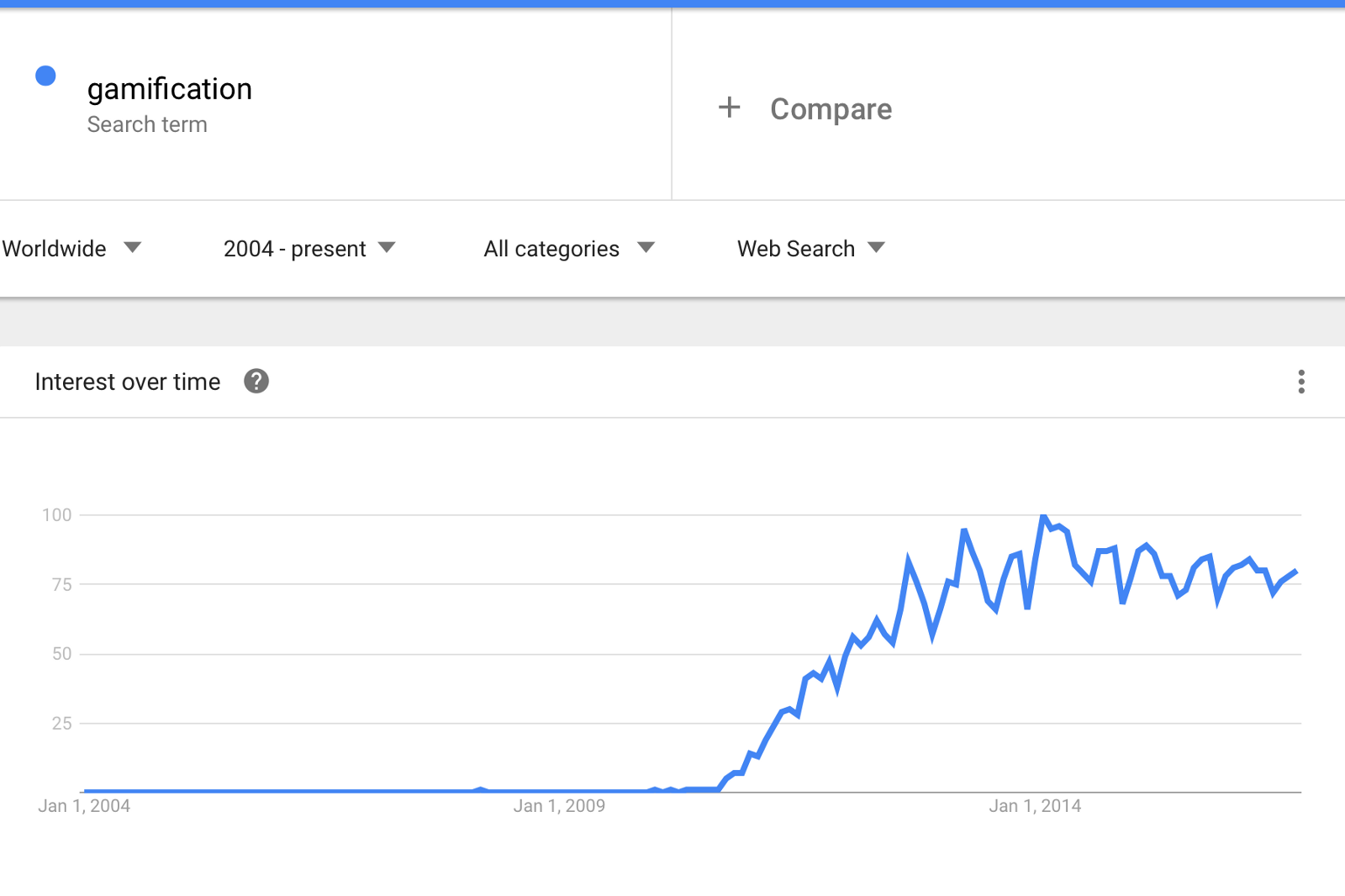Note: Sagefy was shut down in 2025.
Gamification seemed like a natural fit for Sagefy. The term had been around since about 2010. Gamification came to its current position in 2013. 2013 was around the same time I started working on Sagefy. I didn’t know much about gamification beyond the cliché of points, badges, and leaderboards. But I did know that many businesses and organizations invested in gamification. In particular, those related to learning (Khan Academy, Duolingo). I explored this through videos, articles, books, and courses. I realized people used gamification as a synonym for a more familiar phrase: extrinsic motivation.
The word “gamification” came into existence around 2010. “Gamification” reached the term’s current standing in 2013.
What is Sagefy, and What is Gamification
Sagefy is an open-content adaptive learning system. Open-content means anyone can create and update learning content, like Wikipedia. Adaptive learning means the content changes based on the learner’s goal and their prior knowledge. The combination means anyone can learn just about anything, regardless of their prior knowledge.
Gamification is the application of game-like elements to traditionally non-game activities. An example of gamification would be awarding points to a sales team on each sale, and awarding a prize for the highest number of points. In learning contexts, this usually means something like awarding points for mastering content, and awarding prizes like trophies or unlocking content.
We often find gamification in learning contexts, especially e-learning. The reason is motivation. Online courses have typically lower participation and completion rates than traditional courses. Learning content creators use gamification to improve their statistics.
What I’ve Read
I’m no expert in gamification. Given the age of gamification, I’m not sure anyone is. That said, I’ve had a little background on it. Some of my influences include:
- The Coursera Gamification course, taught by Kevin Werbach.
- “We Don’t Need No Stinkin’ Badges”, by Jane McGonigal.
- The Gamification of Learning and Instruction by Karl Kapp.
These are three specific items. Also, I have a background in user research and testing, as well as my interest in learning science and memory.
Pros and Cons of Gamification
Some of the good things can come from adding game elements to a learning platform like Sagefy. The largest opportunity is of course increased motivation and engagement. Gamification can lead learners to use the site for longer and to return more frequently. Adding playful elements can increase the positive emotions of the platform. Positive emotions help to spread word-of-mouth. Gamification can add a sense of progress, and can increase social activity.
There’s some cons. We already see some negative reaction to points, leaderboards, and badges. Because gamification is becoming so common, many people associate these game elements with marketing. Gamification can also be manipulative, both intentional and unintentional. By setting up the wrong motivations, it can lead learners to focus on gaming the system rather than on learning. Gamification can also lead learners to focus on the gamified rewards rather than the reward of learning. This can lead to a set of false expectations. Rewards can demotivate because they distract from the learner’s internal goals. The other nuance is that different learners have different reasons for learning. Not everyone finds all game elements motivating.
Why Intrinsic Focus for Sagefy
In my mind, adding some gamified elements can be fun. The most important thing is that those elements support, and not oppose, the internal motivations of the learner. For example, giving users an easy way to track their progress is important. Reminding users of their goals is valuable. Encouraging social interactions can add to the learning experience. Focusing too much on badges, leaderboards, economies, and points can detract instead.
Sagefy is currently minimal. But it will grow in features. The question for me with motivation will remain. Does this feature support the learner’s intrinsic motivation? Or does is distract? If it doesn’t pass that test, I can’t support it.
